Special opening of the Kouka Teahouse
Article by the FY2024 Tokyo Metropolitan Teien Art Museum Internship.
The tea ceremony at Teien Art Museum is an event you won’t want to miss this autumn. During the ceremony, you can enter the teahouse named Kouka and immerse yourself in the traditional Japanese art of tea while enjoying a seasonal dessert. You’ll have the opportunity to learn essential tea etiquette and gain insight into Japan’s unique understanding of seasonal changes and their influence on culture, society, and human psychology.
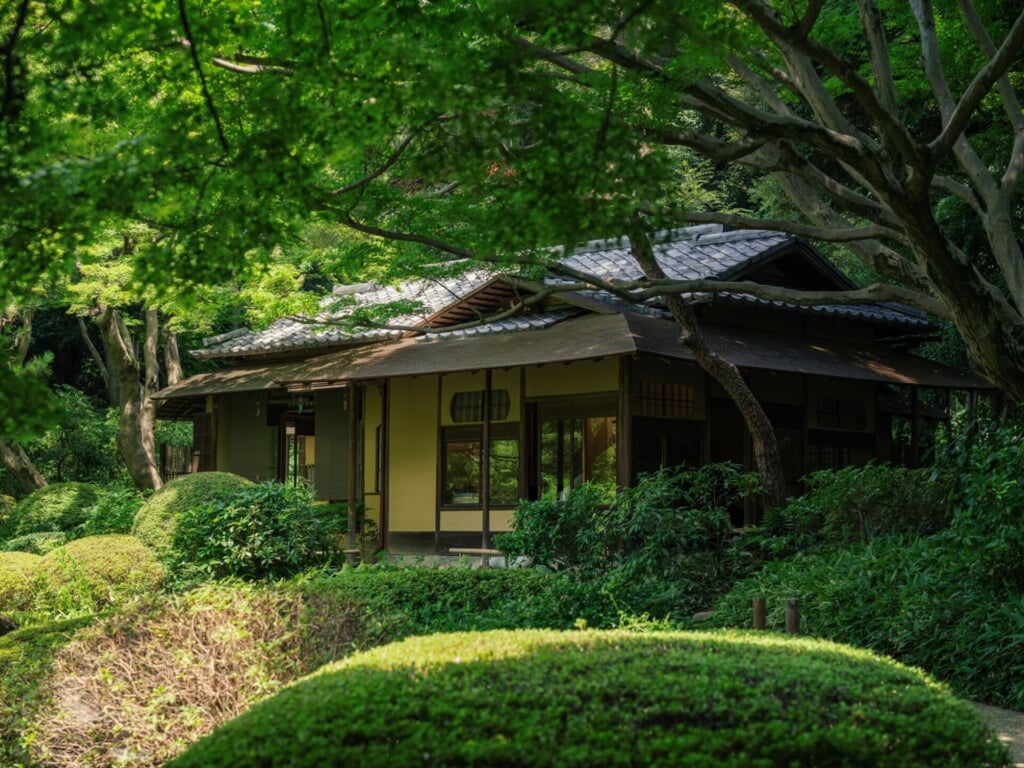
The teahouse at Teien Art Museum, called Kouka, was named with two Chinese characters meaning “light” and “splendid,” a choice made by Prince Yasuhiko Asaka, the original owner of the art deco house now main building of Teien Art Museum.
Kouka was constructed in 1936, three years after the completion of the main building of the former Prince Asaka residence. Designed by Sason (Zesokuan) Nakagawa (1880–1957), a tea master from the Mushakoji-senke school of Japanese tea ceremony and built by sukiya carpenter Masaya Hirata (1900–1980), the teahouse reflects a deep understanding of traditional design.
But what is sukiya-zukuri? Sukiya-zukuri is a traditional Japanese architectural style characterized by the use of wood and natural materials, originating from the design of Japanese tea houses.

The teahouse was specifically designed for the prince’s use, making it quite different from the conventional concept of a traditional Japanese tearoom. Everything was arranged to ensure that the tea master (the prince himself) had the best view of the garden and the guests, whereas a classical Japanese tearoom typically emphasizes a master-guest hierarchy with the guests being the priority.

The teahouse consists of three rooms: the koma (small room), the hiroma (large room), and the ryureiseki (room with chairs). Kouka is notable for its high ceilings and bright, spacious interior, reflecting Prince Asaka’s tastes. In 2015, Kouka was designated an Important Cultural Property of Japan, along with the main building of Teien Art Museum.

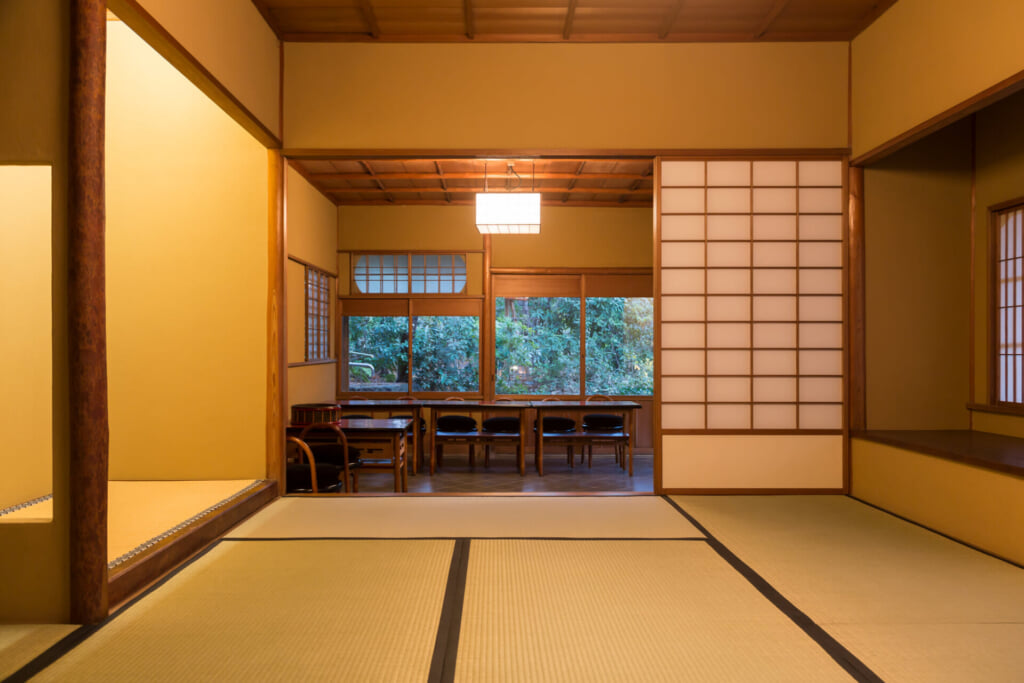
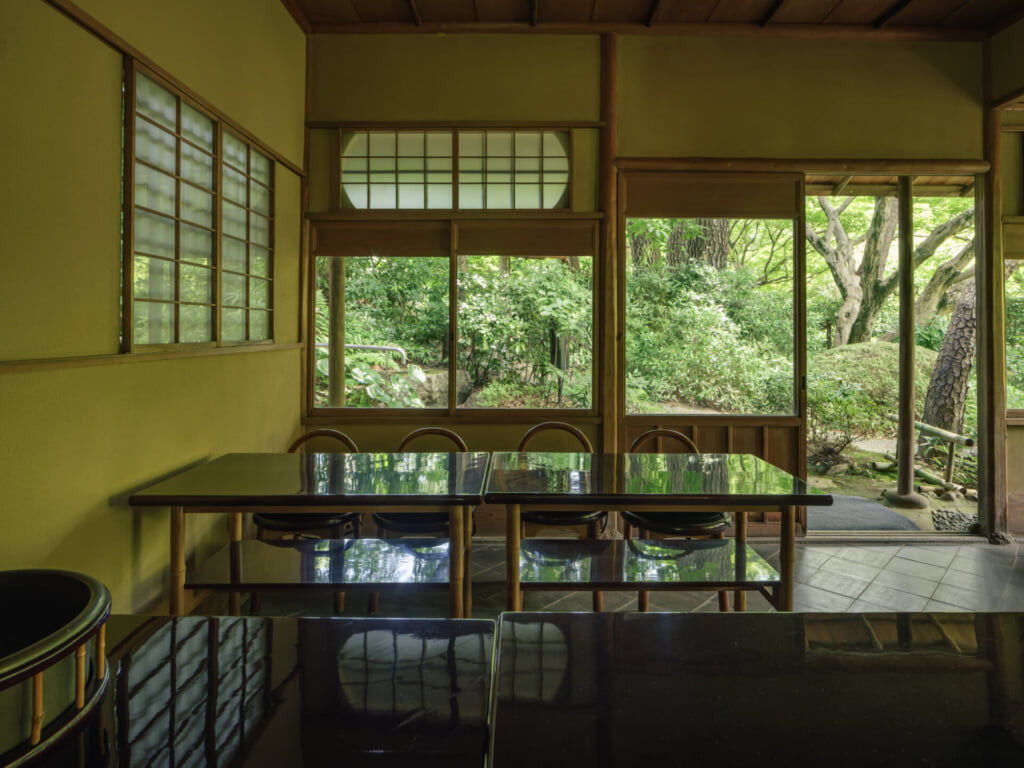
I visited Kouka in the summer during preparations for the tea ceremony. The glassware, including masterpieces by René Lalique and works by renowned glass artist Mika Aoki, was chosen to evoke the feeling of fresh, clean summer air. The seasonal sweet was a beautifully transparent jelly.
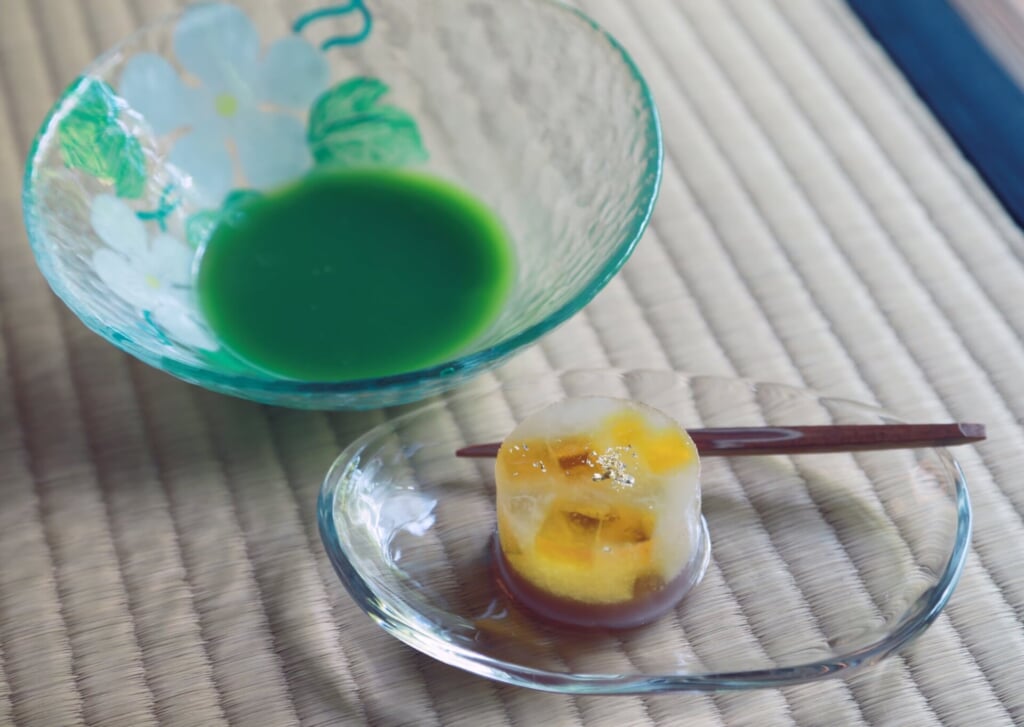
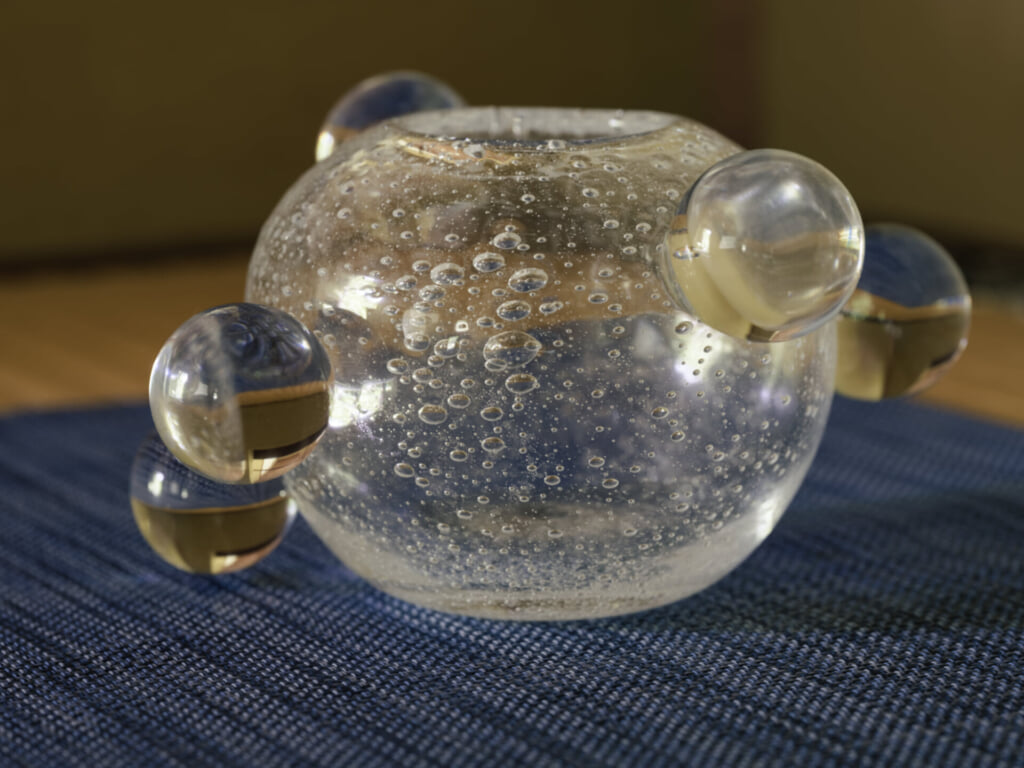
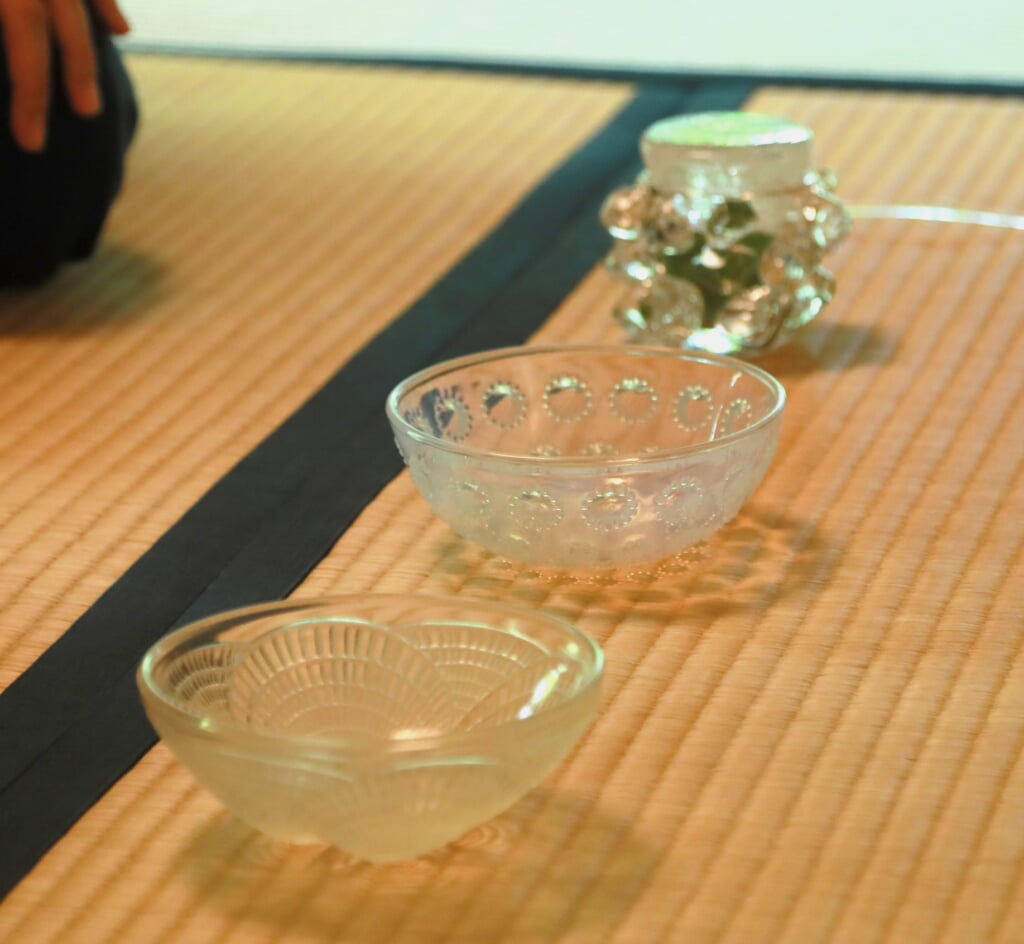
(Note: Don’t miss Lalique’s masterpieces in Teien Art Museum’s Entrance Hall!)
The teahouse was filled with unique objects I had never encountered before, such as glass furin bells and pig-shaped mosquito coil holder — everything designed to capture the essence of a Japanese summer.

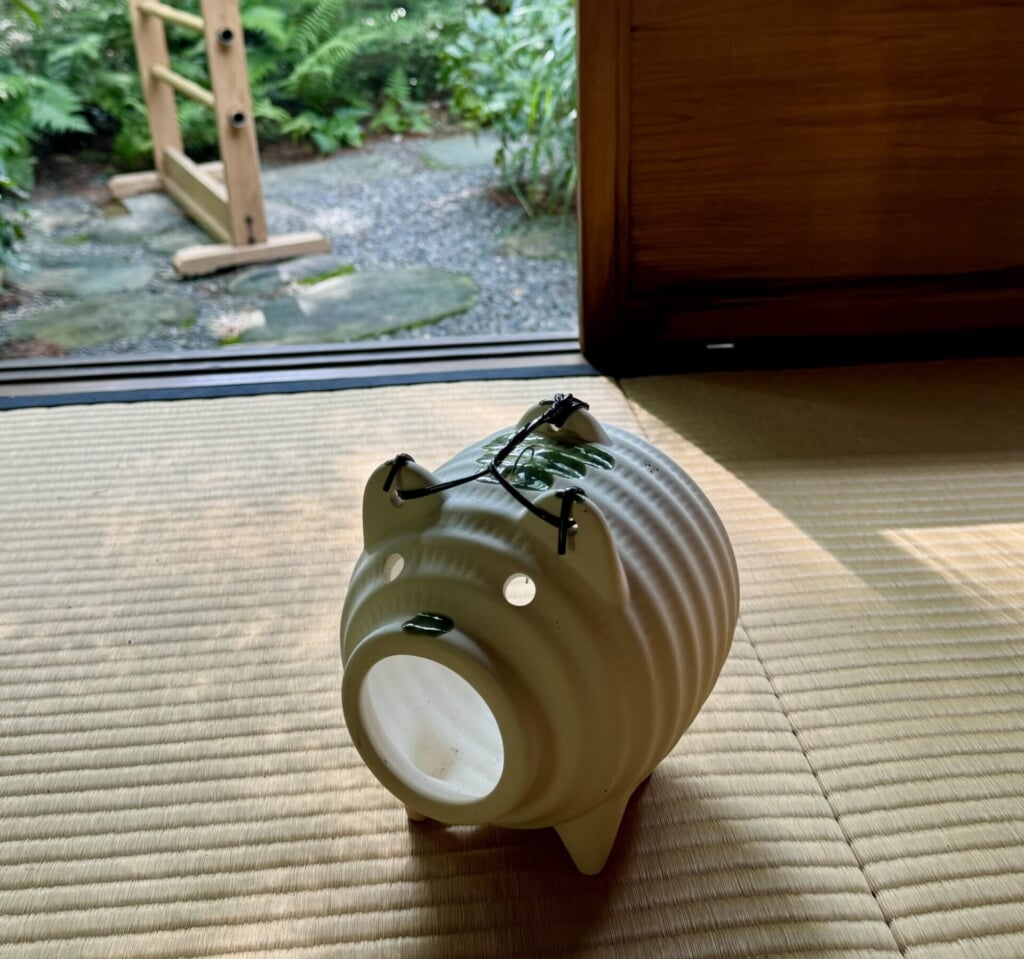
In autumn, the scenery visible from the teahouse’s windows transforms dramatically. Surrounded by maple trees, Kouka becomes the perfect spot for momijigari (autumn leaf viewing). The green hues give way to vibrant reds, oranges, and yellows, mirrored in the seasonal tea set.

During winter, a sunken hearth will be featured—a rare sight in modern Japanese homes.


Please visit Kouka teahouse any time of year, and don’t forget to join us for the autumn tea ceremony!
Written by the Tokyo Metropolitan Teien Art Museum intern, Ksenia Basmanova

